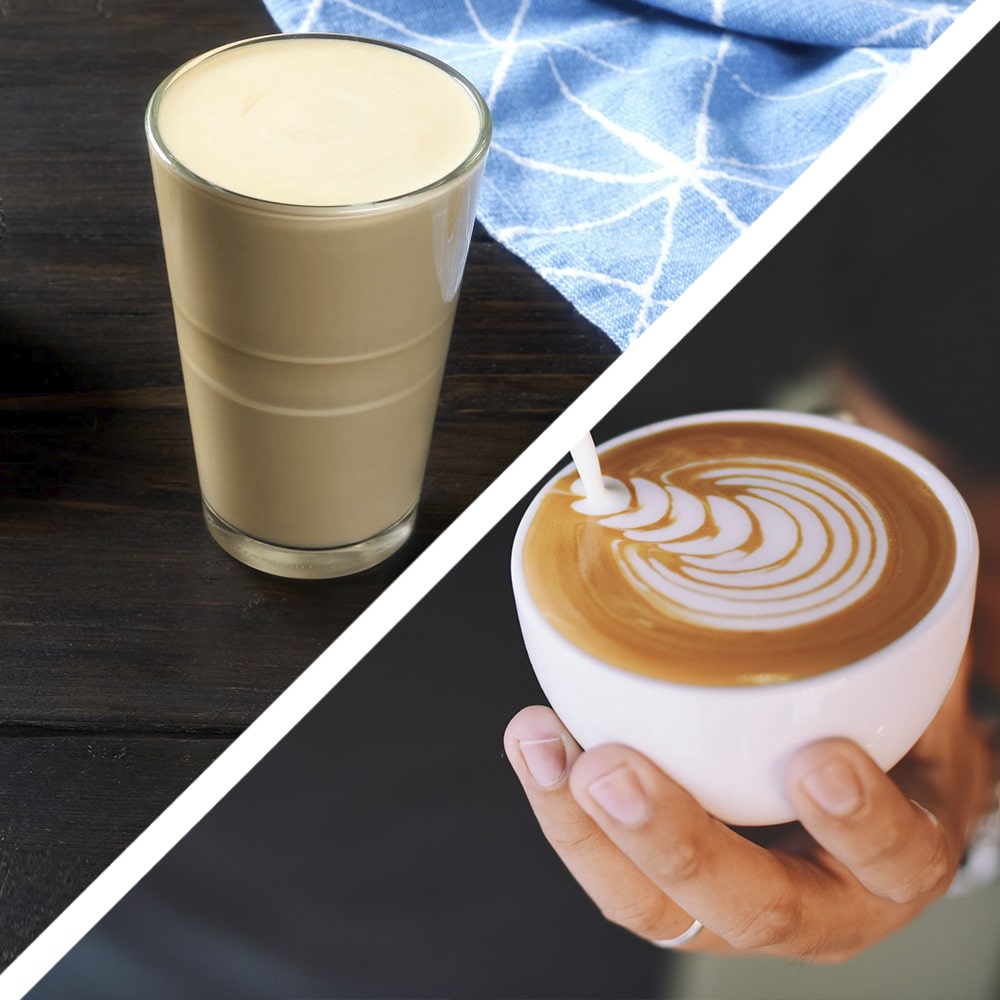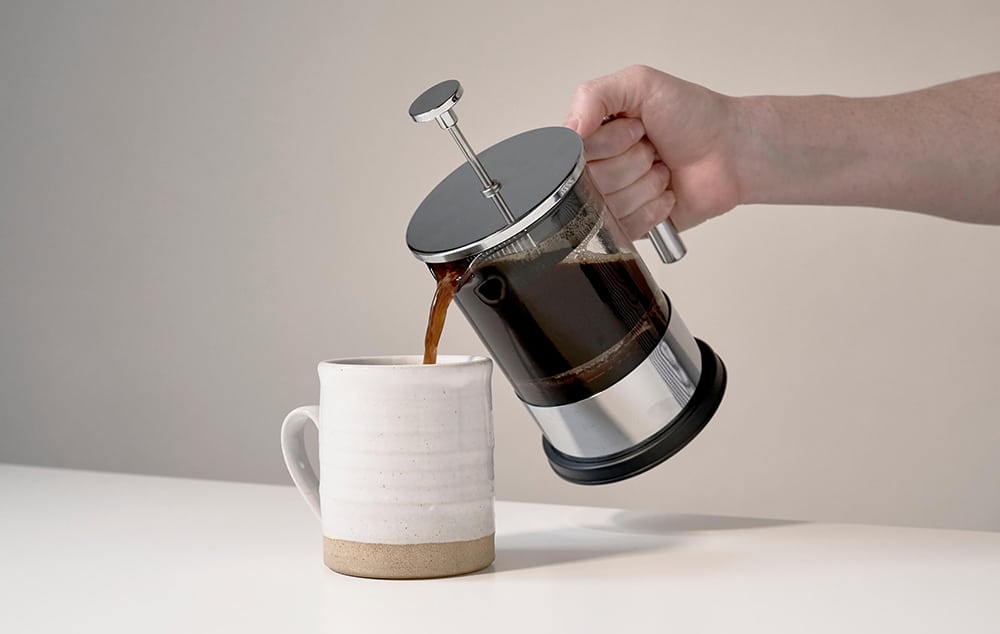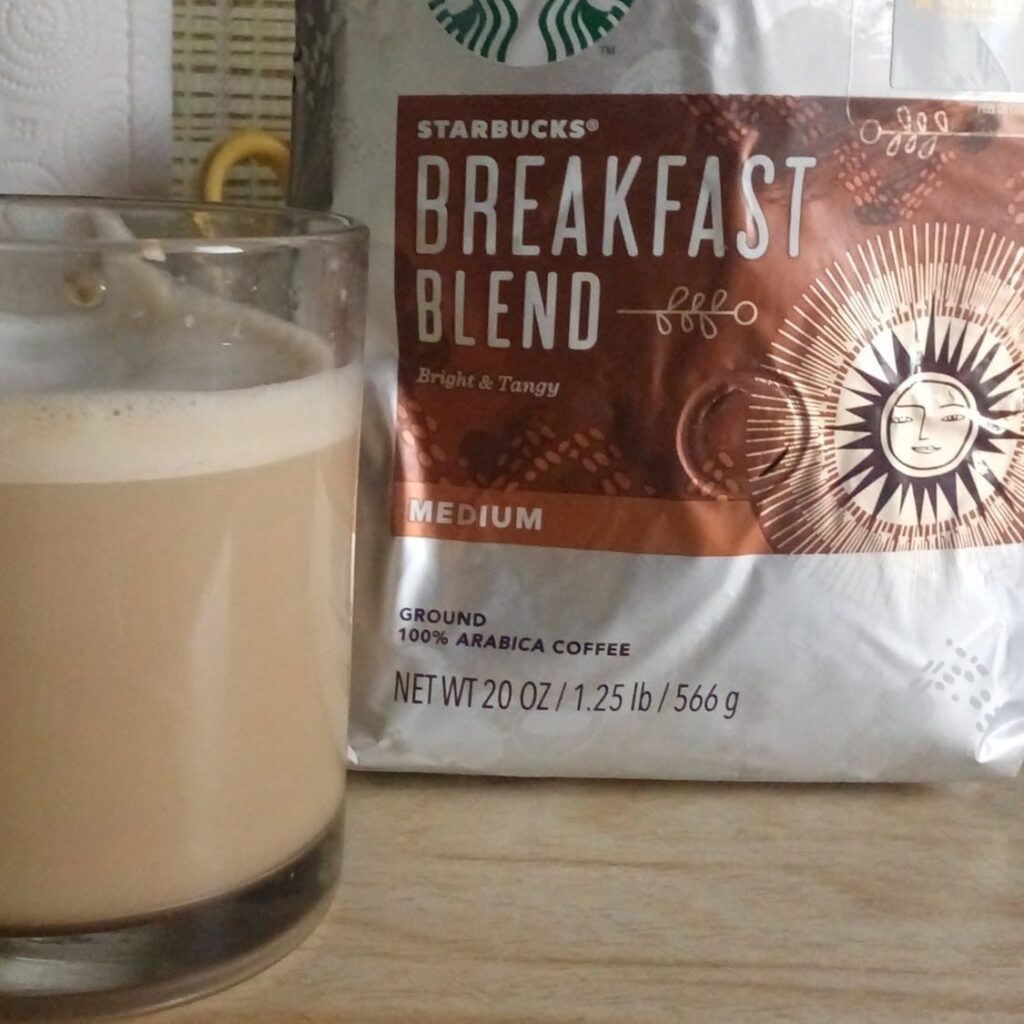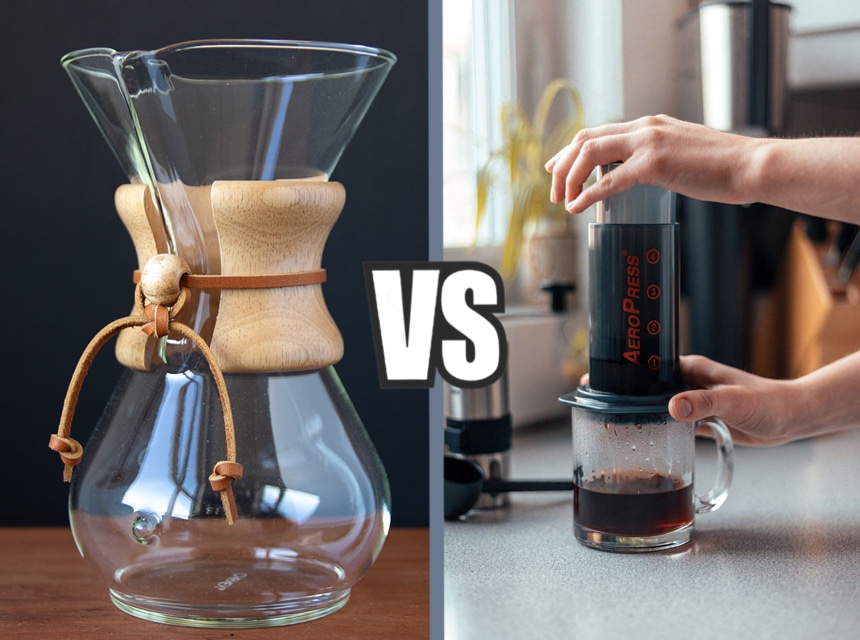

At-home coffee brewing has been popular since the 1930s when many people around the world were able to take advantage of modern technology to skip going to their local café. The only downside is there are so many ways to produce coffee that newcomers to the coffee world often find themselves confused.
What is the best way to brew coffee at home? What is the difference between a French press vs. pour over coffee? Does the caffeine content differ based on how you prepare the beans?
This short guide will give you an overview of the differences between French press coffee and pour over coffee you can make at home. Once you’re finished reading, you’ll know exactly what you’ll want to make and the equipment you need to make it.
A French press is a unique device designed to produce fresh coffee at home. It was first patented in 1929 by an Italian designer and was originally created by another Italian inventor. It is only in North America that the clearly Italian invention was given the title French press for mysterious reasons.
The French press is a simple device. Coffee is brewed by combining ground coffee beans with hot water in the main empty beaker of the press. This mixture is allowed to sit for 2 to 4 minutes. The press is then pushed down into the mixture and separates the grounds from the liquid using a basic filter.
Users of the French press need to carefully time how long they allow the grounds to mix with the water. Too long, and it is common for the coffee to become bitter and acerbic. To get the best results, users are advised to use coarse grounds rather than fine ones. This is because it is difficult to filter out smaller grounds without using an excessive amount of force.
However, the French press appeals to many people because of its simplicity. It is easy to pack and transport.
Pour over coffee is one of the most popular methods of brewing coffee currently in use. In fact, it is often used in cafes and fancy coffee shops as a way to extract the most flavor out of the beans. To make this type of coffee, you first must grind your beans and then insert the grounds. You then also add hot water to a separate chamber. Over the span of a few minutes, the hot water drips onto the grounds and extracts the flavor and caffeine you desire.
Pour over coffee originated in 1908 when a woman grew tired of the bitter beverage produced by her percolator. She began to spread her design, which used filters and basic water to separate extracted coffee from the grounds.
Pour over pots and machines became popular in the 1930s and rapidly spread. Many popular coffee machines in the modern era use the pour over technique, but it can be time-consuming and requires the use of filters that might contain unwanted ingredients. Some users also worry about the potential environmental damage caused by using too many filters.
As you take a look at these different coffee machines and extraction methods, you can start to see just how they can affect the taste and even texture of your coffee. While both use basic mechanics to create delicious coffee, they utilize different methods and can produce coffee using a variety of grind sizes.
If you are unsure of which machine to buy for a home, check out this overview of some of the most important coffee features, and how they are affected by your technique: caffeine, taste, and nutrition.
Because the French press and pour over refer to different types of brewers, they naturally utilize different brewing methods. The French press, for example, uses the pure strength of the user to push liquid through an attached filter that separates extracted coffee from the grinds. Unlike other methods, the grinds are allowed to percolate with the water for an extended period of time to produce drinkable liquid.
A pour over machine, meanwhile, does not allow liquid to sit inside the grounds for long. A filter is still used, but now it rapidly separates liquid from the grounds to avoid allowing the coffee from becoming too bitter or sour.
Both methods take between 5 and 10 minutes to produce fresh coffee, and do so without wasting liquid or oversaturating it. However, the user of the French press will be required to use more force to get their coffee and will actually need to watch the machine closely. Meanwhile, someone who uses a pour over will be allowed to do something else while it brews. If you prefer to put your time to good use, we recommend you to check out our selection of the best pour over coffee makers.
There is a vast difference in the variety of grind sizes you will be able to use in each machine. The French press, because it requires force, works best with a coarse grind. Larger pieces of the beans are easier to separate from the liquid, allowing you to brew fresh coffee without difficulty. If you try to use a finer grind, it will be harder to separate the beans. The result is coffee that has grit in it, which is unappetizing to many. So, for example, you won’t be able to easily brew espresso.
A pour over machine, on the other hand, works well with a plethora of grind sizes. You can use a large grind, a fine one, or somewhere in between. This is because the user does not need to use a ton of physical force to get the liquid coffee they want to drink. This means, if you are looking for simplicity, choose the French press. If you want something versatile, use the pour over machine.
One of the biggest concerns for individuals who brew their own coffee is how much caffeine will be in the resulting beverage. One fact which often surprises new coffee drinkers is that the amount of caffeine can be greatly affected by how the caffeine is pulled from the grounds.
The French press averages 135 milligrams of caffeine for every 8 ounces of coffee produced. This is a great amount, and is enough to wake up anyone in the morning.
A pour over machine, meanwhile, can produce anywhere from 115 to 175 milligrams of caffeine per 8 ounces. Using a pour over device is more variable because you have access to a broader selection of ground sizes. When you use a finer ground, you are able to pull more caffeine and flavor from the beans. If you prefer a coarser ground, you will have less caffeine and a lighter flavor. If you truly value your caffeine, consider a pour over. If you prefer consistency, you might enjoy the French press more.
Taste is another feature of your coffee, which will be greatly affected by your brewing method. Over time, people have developed a fondness for a sweeter, lighter coffee. In the past, it was far more common to drink bitter brews that could be created in a short period of time.
If you prefer something dark and bitter, then you will have excellent luck with the French press. This device allows liquid to percolate on the grounds for an extended period of time, which creates a more acerbic flavor. Sometimes it can even be difficult to separate the liquid from the beans at the end.
A pour over machine, on the other hand, can develop more complicated yet smooth flavors. The coffee created by these brewers will be lighter, sweeter, and generally ‘blonder.’ You will also be able to generate more variety.
The brewing method for your coffee does not affect the calories and nutrition present in your coffee when comparing the French press to a pour over machine. This is because no additional ingredients are added, like milk and sugar. You are instead extracting flavor, caffeine, and other minor nutrients from the beings.
So, you can expect your coffee to have between 2 and 10 calories for a basic serving from a French press or pour over coffee. There is almost no sodium, and roughly 92 milligrams of potassium per 100 milliliters.
Brewing coffee at home is one of the main characteristics of the 20th and 21st centuries. It allows people to have maximum control over how their brew tastes and can affect which cafes and shops you prefer visiting. In general, the French press is an old method that generates darker and more bitter coffee and works for individuals who like to have greater control over flavor. A pour over press, meanwhile, allows for more creativity and flavors.
Both methods of creating coffee are accessible to the average individual. The majority of coffee shops use a pour over press, but a French press might be easier at home since it is portable, easy to use, and also easy to clean. You can even use a variety of filters! But in the contest between the French press vs. Pour Over machines, the true winner is you.





